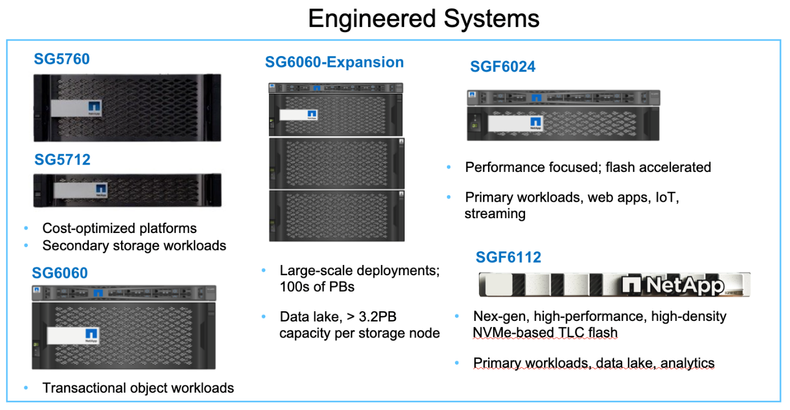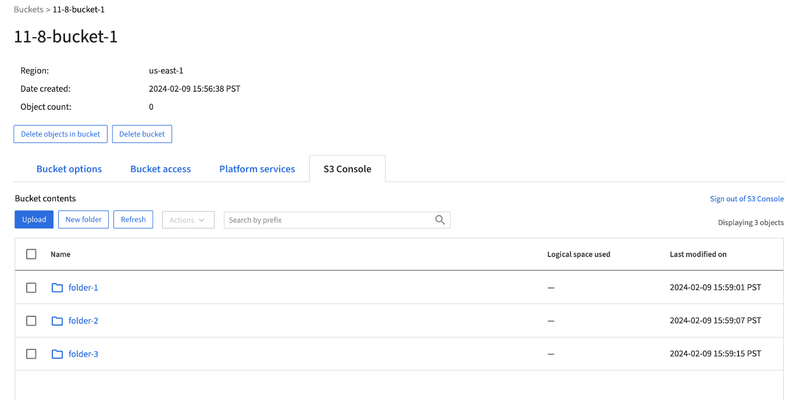As we talk about the next version of StorageGRID, I want to start with a big thank you to our customers for supporting us and bringing us this far. You are the center of our universe and everything we do revolves around how we can make your life easier. Your engagement makes all the difference. Thank you!
Today, we are happy to present the latest and greatest StorageGRID software – Version 11.8.
StorageGRID 11.8 is the next step as we continue to simplify on-prem object storage. As we developed 11.8, our focus was on improving the user experience, security and simplicity of the product. This is especially important because of our large customer base with extremely large storage deployments.
We can broadly categorize the features in this release into:
- QLC support
- Manageability
- Security
- Simplicity
QLC drives support
We are very excited to announce that with 11.8 StorageGRID is ready to support QLC drives. We have added features and improvements so that in the future StorageGRID can leverage QLC drives. Clearly, this indicates that QLC drives may be available at some point in the future, and we are excited for its ability to improve density, price/performance and power consumption. Our current portfolio is as follows

Manageability
To improve manageability, the most significant change we have made is simplifying information lifecycle management (ILM) - a data policy engine that simplifies how data is moved and placed. This data movement can be controlled by filters and conditions that provide very granular control to customers.
ILM is the single most used feature in StorageGRID that provides tremendous flexibility to customers in configuring their data lifecycle. Our customers find it so compelling that many customers have automation that changes policy programmatically. This is a testimony to its usefulness, but also worrisome, because a careless ILM change can have unexpected consequences.
To mitigate this problem, while dramatically improving manageability, in StorageGRID 11.8 customers can create multiple simplified policies, each policy having the same power and flexibility as before. These individual policies can now be attached to buckets via ILM policy tags. This dramatically simplifies policy management, and more importantly reduces blast radius in case of configuration errors.

Security
Security continues to remain a major deliverable for us in every release. Clearly, it is non-negotiable, but security does not happen in a vacuum. We are fortunate and thankful to have a range of customers who ensure that we are held to the highest standards of security, accountability, and inspection. The features in this release are a result of your feedback – thank you!
This new release supports:
- UEFI secure boot
- Local key management for direct attached storage
- Additional FIPS 140-2 ready TLS cryptography (validation pending)
- KMIP Hashicorp support
UEFI secure boot ensures our appliances boot from validated kernels and uses trusted software. FIPS 140-2 validated TLS cryptography ensures that all client connections to StorageGRID are secure and meets entry criteria set by many sensitive customers.
Building on the SG6112 debuted with StorageGRID 11.7, we have now added an onboard encryption key manager like what is already available on the non-NVMe StorageGRID appliances (SG5760, SG5712, SG6060 & the SG6024). Though the SGF6112 could already integrate with an external KMS, not all customers have external key managers in their environment. The new local key manager in the SGF6112 provides these customers with a way to use self-encrypting drives. In addition, if customers can use an external key manager, we now support Hashicorp Vault in addition to Thales.
Simplicity
Of the many things we have done to improve simplicity, I would call out 3 notable items:
- Support for mixed nodes
- Metadata-only nodes
- S3 console that makes using object storage simple

Mixed nodes functionality is the ability to mix SSD and HDD nodes together in a single site that delivers SSD performance at HDD prices (or nearly). This was already possible in StorageGRID, and with 11.8 we have taken this to the next level. Now, we will support customers mixing even a couple of SSD nodes with many HDD nodes in a single site. This allows many more and simpler configurations that deliver different performance and cost points. Coupled with StorageGRID ILM policy, this significantly improves the price/performance of a StorageGRID solution.
Our customers are also increasingly demanding that we provide simple tools to use S3. In the past, we have suggested commandline and other industry standard tools. For many customers, this poses a security burden as customers need to take these tools through security audits. In addition, it can be difficult to maintain open-source software and other small tools. We have heard this feedback and in 11.8 will provide a native S3 console that makes it easy to manage StorageGRID.
Another major architectural shift that StorageGRID is beginning to make with 11.8 is to decouple metadata and data. 95% of our customers are very satisfied with the simple scaling of data and metadata together. StorageGRID manages complexity, and customers achieve simple scaling via node count.
In some cases, we have seen customers push the boundaries of what is possible. In these special environments it makes sense to scale data and metadata separately. StorageGRID 11.8 takes the first steps in this direction. Our goal is to support both modes of scaling – via hybrid nodes (metadata and data), and by scaling data and metadata separately. While we believe most of our customers will continue to leverage hybrid nodes, for many customers asymmetric scaling is the right solution.
I have not covered every feature here and as you dig deeper into the release, but I hope that the work we have done makes you love the StorageGRID experience even more.
Find out more details about new StorageGRID 11.8 features in the documentation and watch the demos.